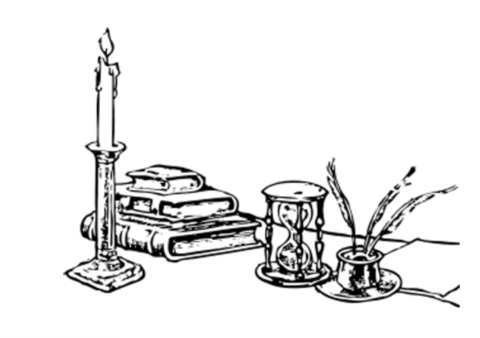
I do crossword puzzles first thing in the morning, hoping to trigger some sort of thinking. I also do word search and scrambled words puzzles, all on AARP's games site, then work a jigsaw puzzle or three elsewhere online. I don't challenge myself by picking harder crosswords or jigsaws of more than 24 or 48 pieces—I shouldn't burn through too much of the morning before checking the weather (Why are weather videos always interrupted by ads preventing you from seeing the videos?) and finally opening my email (most of which I delete without reading since few are actually addressed to me personally). Then I'm ready to do something useful, like writing or editing.
Is it obvious that I'm retired? Composing weekly blog entries is my major preoccupation. I don't know why I need to post one each week. Maybe, like the crossword and jigsaw puzzles, I need to have some habits beyond occasionally walking in my neighborhood.
Sometimes I'll compose something to send to an editor hoping to have it published or I'll edit something a writer has submitted to The Humble Essayist Press, the project Steve Harvey and Kathy Winograd and I committed to a couple years ago. In the past few weeks I've both edited and also been edited, and this morning, having completed my puzzles, instead of reflecting on a book I recently read (It was a very good one!), I've been thinking a lot about editing.
I've been edited in the past. Sometimes editors steered me towards a stronger, smarter manuscript; sometimes an editor's vision of my text was insistently at odds with my own. Although I'm comfortable with most of the books and essays I've published, a few have portions or passages I regret having been forced to delete or forced to have added. Both personal editing triumphs and editing defeats often rise up in memory whenever I start editing someone else.
The truth is that every reader reads every text differently than the original author would read it. I once had to negotiate through a senior editor a sentence in one of my manuscripts that their copyeditor (someone worried about the correctness of the language in the writing) felt was ungrammatical or awkward and wanted revised. I'd deliberately worded that line as an allusion to something in the text I'd been discussing but she was more remote from my manuscript and its subject and concentrating on achieving extratextual stylistic conformity. I've noticed that kind of distance surfacing in book reviews where a reviewer insists on reading a text differently than the author intended it. I once was forced to delete a sentence in a critical essay that the editor found funny rather than academic—I'd actually written it to be funny rather than academic. I suspect that a manuscript's acceptance or rejection usually depends on an editor's personal taste rather than on some imaginary universal standard of literary quality being adhered to.
When the first edition of my textbook Wordsmithery was accepted by Macmillan, two peer reviewers disagreed with elements of the book in ways contradictory to one another. One thought it needed to be more assignment oriented, more directly instructional; the other thought it ought to have less emphasis on composition research and theory. I approached Barbara Heinssen, my editor, with frustration—how could I revise the book to satisfy demands in opposition to one another as well as in opposition to my manuscript? She advised me to listen to whatever comments I felt made the book stronger, more readable, and ignore the comments that undermined what was already unified in the manuscript. Her advice has stuck with me through the revision of every subsequent book I've written since.
Recently, in a matter of weeks, I've heard back from the reviews editor at River Teeth about my review of two new books. Most of his suggestions were grammar- or style-related, many of which I accepted, many of which I ignored. One passage troubled him, and I responded with an explanation that eased his concerns. The review now satisfied us both. In the same period, I heard back from an essayist whose manuscript I'd edited for The Humble Essayist Press, explaining his resistance to some of my recommendations and acceptance of others. At THE Press the author ultimately decides. We both seem satisfied with the manuscript as it's been evolving. The editor's involvement hasn't changed my sense of that review being mine; my editorial involvement hasn't altered that writer's sense of his manuscript being his.
Both my review and his manuscript say what their authors want them to say. That's what editing should make happen and, happily, just happened twice.
Notes: River Teeth: A Journal of Narrative Nonfiction. Book Reviews